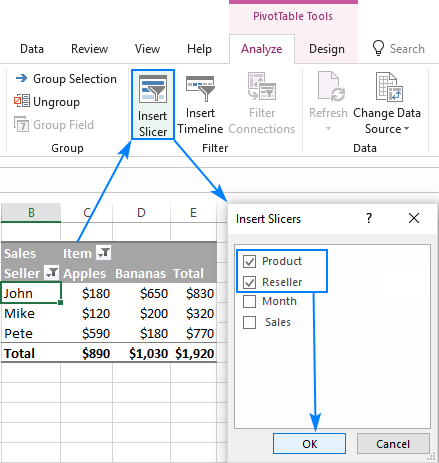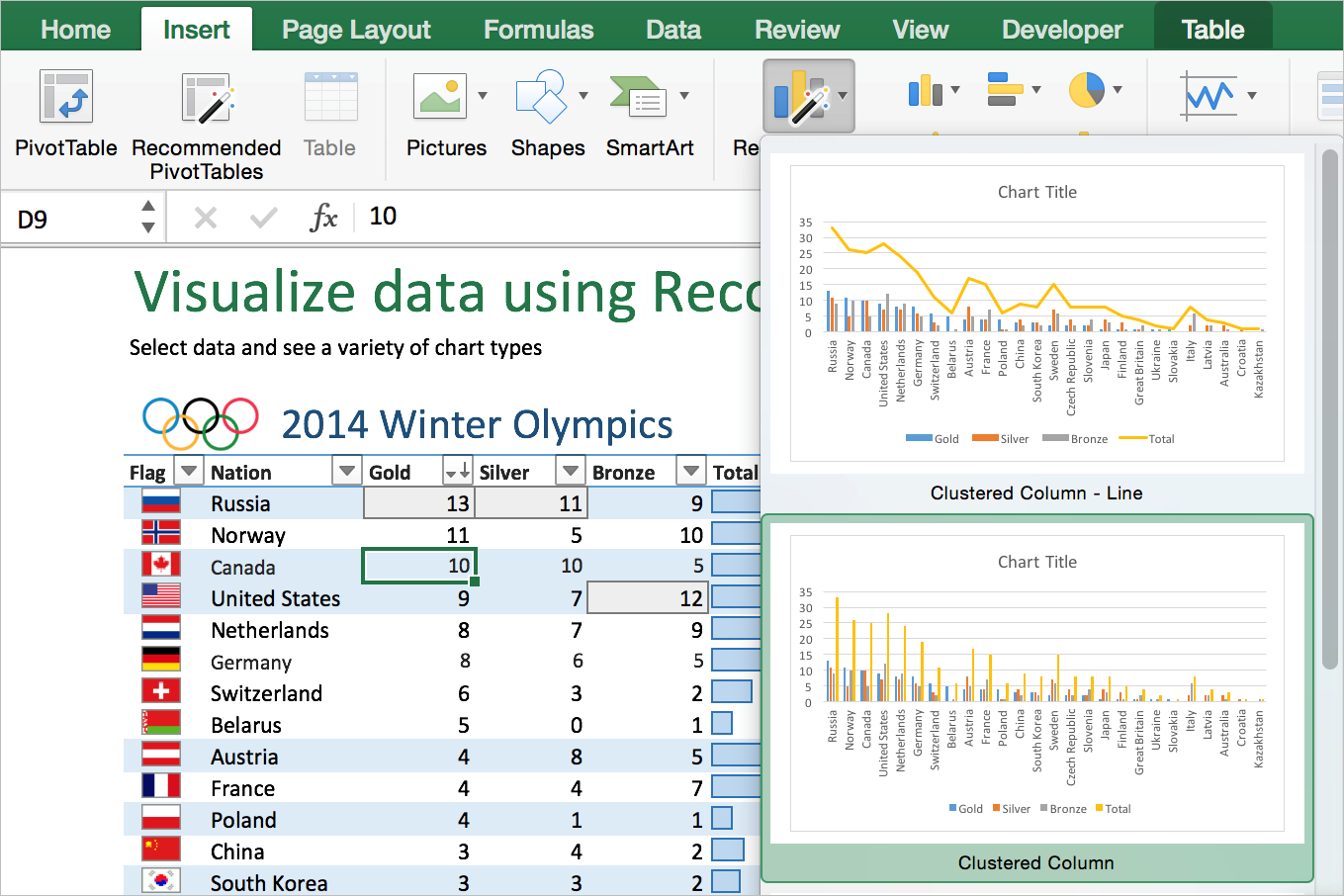- Excel Charts Tutorial
- Chart Filter Excel 2016 For Mac Os
- Excel 2016 Chart Types
- Chart Filter Excel 2016 For Macbook Air
- Chart Filter Excel 2016 For Mac 16 38
- Excel 2016 For Mac Download
- Chart Filter Excel 2016 For Mac Pause Macro For Entry

Chart Filter Excel 2016 For Mac Os
Below we have created a FREE downloadable PDF cheat sheet and a full searchable list of the 333 Excel Shortcuts for both in Windows and Mac for you! Download it, print it and post it to your wall so that you can get a quick reminder of the best Excel keyboard shortcuts out there. Exploring charts in Excel and finding that the one you pick isn’t working well for your data is a thing of the past! Try the Recommended Charts command on the Insert tab to quickly create a chart that’s just right for your data.
- I have a chart with past and forecasted figures for several series of data. I set the colors of each serie in order to have something nice and meaningful: 1 color per serie, dotted for forecast. Each time I filter my data to see a particular serie, Excel destroys my work to put back its automated layout which are ugly and meaningless.
- The table filter will automatically roll up dates up by year, so it's easy to include just 2016 and 2017. When I click OK, the chart is updated. So this works because Excel ignores data in hidden rows and columns by default, and the filter works by hiding rows.
- Select any cell in one of your series. Excel will automatically select the rest of the data for you in the.
- Excel Charts Useful Resources
- Selected Reading
You can use Chart Filters to edit the data points (values) and names that are visible on the displayed chart, dynamically.
Step 1 − Click on the chart.
Step 2 − Click the Chart Filters icon that appears at the upper-right corner of the chart. Two tabs – VALUES and NAMES appear in a new window.
Values
Values are the series and the categories in the data.
Click the Values tab. The available SERIES and CATEGORIES in your data appear.
Values – Series
Step 1 − Point on any of the available series. That particular series will be highlighted on the chart. In addition, the data corresponding to that series will be highlighted in the excel table.
Step 2 − Select the series you want to display and deselect the rest of the series. Click Apply. Only the selected series will be displayed on the chart.
Values – Categories
Step 1 − Point to any of the available categories. That particular category will be highlighted on the chart. In addition, the data corresponding to that category will be highlighted in the excel table.

Step 2 − Select the category you want to display deselect the rest of the categories. Click Apply. Only the selected categories will be displayed on the chart.
Names
NAMES represent the names of the series in the chart. By default, names are taken from the excel table.
You can change the names of the series in the chart using the names tab in the chart filters. Click the NAMES tab in the Chart Filters. The names of the series and the names of the categories in the chart will be displayed.
You can change the names of the series and categories with select data button, in the lower right corner of the chart filters box.
Names – Series
Step 1 − Click the Select Data button. The Select Data Source Dialog Box appears. The names of the series are at the left side of the dialog box.
To change the names of the series,
Step 2 − Click the Edit button above the series names.
The Edit Series dialog box appears. You can also see the cell reference of the name of the first series.
Excel 2016 Chart Types

Step 3 − Change the cell reference of the name of the first series. Click OK.
You can see that the name of the first series has changed.
Step 4 − Repeat the steps 2 and 3 for the names of the rest of the series.
Note that the names have changed only in the chart. They have not changed in the Excel table.
Names – Categories
To change the names of the categories, you need to follow the same steps as for series, by selecting the edit button above the categories names in the select data source dialog-box.
First look Microsoft has released a self-destructing preview of Office 2016 for Mac – Word, Excel, PowerPoint, Outlook and OneNote – but it still is not the equal of its PC counterpart.
Should Office work as well on OS X as on Windows? You can imagine the question being debated on Microsoft's Redmond campus. Is it better to keep users hooked on Office and Exchange whatever computer or device they use, or to preserve a key selling point for Windows, given that many business users live in Excel, Outlook, Word, and PowerPoint?
The appearance of decent-though-cut-down versions of Office for iOS and Android suggests that opinion has tilted towards making Office work well everywhere. But a first look at the new Office 2016 preview suggests that Mac Office, while improving, has yet to catch up with Office 2013, let alone with whatever may be in the new Windows Office that's expected later in 2015.
Office 2016 preview is a substantial 2.66GB download but it's easy to install, provided you have the 10.10 'Yosemite' flavour of OS X. Earlier versions are not supported. Another possible compatibility headache is that Outlook 2016 only supports Exchange 2010 or higher. The preview can work alongside Office 2011 and will run for up to 60 days.
Microsoft does seem to be bringing the visual design of Office on the Mac more closely into line with Office on Windows and on devices. The curvy app icons in Office 2011 were unique, while the Office 2016 icons are the same as those on Windows. The ribbon in Excel 2016 looks more like Excel 2013 than Excel 2011 for Mac, complete with the washed-out effect that was part of Microsoft's 'content-first' strategy. There are still obvious differences, though; for example, menu headings are in all caps only in Office 2013.
The ribbon toolbar in Excel 2011, Excel 2016, and Excel 2013
A big change, appearance aside, is that Office 2016 now ties in properly with Microsoft's cloud services. Opening documents from and saving them to either the consumer or business versions of OneDrive is built-in, and the 'Open Recent' feature now shows you recent files across all your computers – presuming you have signed into a Microsoft account.
Chart Filter Excel 2016 For Macbook Air
Considering the five-year gap between Office 2011 and Office 2016, the official list of what's new is surprisingly short, though it only covers major features. In summary:
Chart Filter Excel 2016 For Mac 16 38
- Throughout Office, Microsoft promises full Retina Display support as well as Full Screen view (click the green icon at top left to enter or exit full screen view), and the redesigned Ribbon mentioned above.
- There are new themes, styles, and templates in Word, Excel, and PowerPoint.
- Word and PowerPoint support threaded comments.
Threaded comment in Word 2016. OK, I am talking to myself.
- Excel has added support for the Analysis Toolpak (a collection of data analysis wizards), PivotTable slicers (buttons for filtering data in a PivotTable report), a Recommended Charts wizard, and an Equation Editor (replacing Office 2011's ancient and separate Microsoft Equation Editor). Most Excel 2013 functions are now supported. The formula builder has been improved, and print to PDF has been added.
- Word gets a new Design tab for applying themes and styles, and an improved navigation pane (replacing Document Map).
- PowerPoint gets an improved Presenter View, support for PowerPoint 2013 transitions, and an enhanced animation pane for managing animations. Saving to a QuickTime movie has been chopped.
- Outlook has support for Message Preview (seeing the first line of an email in the list of messages), and Online Archive, a feature of Office 365 Enterprise or Exchange.
- OneNote is now bundled with Office, though since Spring 2014 this app has been free on all platforms.
The above might make it sound as if not much is new. But in fact the look, feel, and performance of Office 2016 are all substantial advances from Office 2011, and there are many small changes I haven't mentioned.
Moreover, while Outlook 2011 was hardly usable on my Core i5 Mac Mini, Outlook 2016 works well even with my unreasonably large Exchange 2010 mailbox. If you use Office 365 or personal OneDrive, Office 2016 works smoothly, where with the the previous version it was a struggle.
Microsoft has also struck a good balance between preserving a common user interface across all versions of Office and fitting in with the Mac user interface. It will not please everyone, but for those who use Office both on Windows PCs and on Macs, the transition is much easier.
That said, Office 2016 does nothing to change my opinion that serious Office users should stick with Windows. Even though it is a couple of years on from Office 2013, there is hardly anything here that is not already in the Windows edition; this is a partial catch-up.
Excel 2016 For Mac Download
For one thing, the current preview is 32-bit only, whereas 64-bit Office has been available on Windows for many years (although Microsoft recommends the 32-bit version for most users, for compatibility reasons). And while Excel for Mac now has PivotTable slicers, what about PowerPivot, which has been available on Windows since Excel 2010?
Chart Filter Excel 2016 For Mac Pause Macro For Entry
There is evidence, though, that Microsoft is working to divide Office into two different variants: full Office on Windows and Mac, and a cut-down version for tablets and phones. There is hope that in time Mac uses will not have to suffer an inferior Office. Then again, perhaps Microsoft does not mind if there is at least one strong business reason to run Windows. ®
